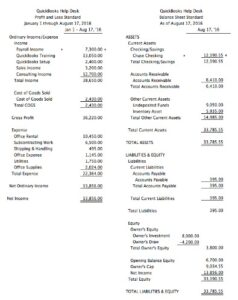Content
- Margin vs Markup Calculator
- Frequently Asked Questions About What Is Margin
- Margin vs. Markup: Calculating Both for Your Alcohol Brand
- Paying Too Much For Accounting? How Near-Sourcing Could Help Your Small Business
- What is Markup?
- How to Calculate Markup
- Crucial Metrics to Evaluate the Effectiveness of Your Marketing Campaigns
You’re placing a candidate at £325 per day and are working at 20%. To work out the client’s charge rate to meet your 20% margin target divide £325 by 80 and then times (x) by 100. Click here to read more about the maths behind markup and margin. This is necessary due to the fact that the markup calculation is based on cost, not revenue. A higher margin indicates the company is keeping more of the money from a sale. The higher the markup, the greater the revenue the company will make per item.
Cost of goods sold (COGS) is the total amount your company spends producing products and services. Knowing how to calculate margin and markup is useful for business owners, CFOs, investors, and other stakeholders. That’s because they both offer their own views on profitability.
Margin vs Markup Calculator
Profit margin refers to the revenue a company makes after paying COGS. The profit margin is calculated by taking revenue minus the cost of goods sold. The percentage of revenue that is gross profit is found by dividing the gross profit by revenue. For example, if a company sells a product for $100 and it costs $70 to manufacture the product, its margin is $30. The profit margin, stated as a percentage, is 30% (calculated as the margin divided by sales). Most companies mark up their products or services to determine the selling price.
- Sellers should use markup values when developing pricing strategies.
- Try our payroll software in a free, no-obligation 30-day trial.
- Markup is the retail price for a product minus its cost, but the margin percentage is calculated differently.
- Before we discuss margin and markup, take a minute to familiarize yourself with the following accounting terms.
Learn how to grow your profits even in the toughest economic conditions. In the above example, the markup equals 42.9%, whereas the margin is 30%. Otherwise, your business could run into serious pricing errors that wipe out your bottom line. Business owners love Patriot’s award-winning payroll software. The markup is 33%, meaning you sell your bicycles for 33% more than the amount you paid to produce them. In the wake of the COVID-19 pandemic and escalating tensions with China, American companies are actively seeking alternatives to mitigate their supply chain risks and reduce dependence on Chinese manufacturing.
Frequently Asked Questions About What Is Margin
So, to ensure the cost is lower than the revenue, the markup percentage needs to be higher than the margin percentage. If a company wants to set a price for a product based on markup, they need to determine all of the costs involved with producing https://kelleysbookkeeping.com/ and selling the product. Gross margin or gross profit is defined as net sales minus the cost of goods sold. The margin formula is revenue minus cost divided by price, while the markup formula is revenue minus cost divided by markup.

” Markup and the margin definition are two of the most important numbers that a business owner or manager needs to know. In addition to the terms being somewhat confusing because they use the same figures to be calculated, they can also be a bit challenging because the markup and margin percentages also change at different rates. So, there is not a standard difference between markup and margin.
Margin vs. Markup: Calculating Both for Your Alcohol Brand
So when you divide the $20 gross profit by the $80 cost, the markup percentage would be 25%. Mistaking margin and markup can lead to selling products at prices that are margin vs markup explained substantially too high or low, resulting in lost sales or lost profits. Additionally, be sure to include periodic refreshers on these topics during ongoing training.
- Despite sounding similar and sometimes used interchangeably, markup and margin are not the same.
- Since markup is based on the cost of goods sold, it is quite useful for salespeople working in a company that knows its costs.
- Let’s say the cost for one of Archon Optical’s products, Zealot sunglasses, is $18.
While both deal with profit, they are calculated for two different purposes. This way, you can guarantee that you generate a proportional revenue for each item you sell. This means the markups you set up at the beginning should scale well as your business grows. We’ll discuss this more when you’ve scrolled further down this page. Figuring out your product’s cost will depend on several factors, for example, whether or not you buy in bulk, whether you source your products from different vendors for different prices, and so on. Once you have a system to calculate your cost of goods sold (COGS), you can use your cost to calculate your price.
Paying Too Much For Accounting? How Near-Sourcing Could Help Your Small Business
In this post, we’ll discuss the differences between markup vs. margin, when to use them, and how to calculate them. GrowthForce accounting services provided through an alliance with SK CPA, PLLC. When referring to a dollar amount, these two refer to the same number. However, when they are expressed as a percentage (as they usually are for pricing and accounting purposes), they are quite different. Get up and running with free payroll setup, and enjoy free expert support.

The markup is also expressed as a percentage of cost (not selling price). Gross margin for alcohol sales can help alcohol suppliers determine the profitability of their products. The relationship between gross margin and markup can be confusing. We hope this explanation makes the concepts a bit easier to grasp.
What is Markup?
One way to answer that question is to calculate the margin for your business. While both are useful tools, margin and markup provide you with different information and should not be used interchangeably, but instead, side-by-side to provide you with a more detailed view of your business. Before we discuss margin and markup, take a minute to familiarize yourself with the following accounting terms.

